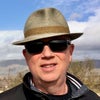The ghettos, factory towns, and dusty crossroads of America are filled with dreamers. In the days before American Idol and America's Got Talent these communities could offer little to stimulate those with imagination, and -- dare they hope it -- talent. While star-struck white kids traditionally headed for Hollywood or Broadway, their black counterparts bucked the odds and beat a path for Harlem and the Wednesday-night amateur show at the Apollo Theater.
They knew they would face the toughest and most demanding audience in the world, a crowd notorious, especially on Amateur Nights, for its vocal and sometimes physical demonstrations of displeasure. They knew about Porto Rico, the crazy stagehand who served as the audience's hit man on Amateur Night. They knew they might not even pass the pre-show audition, much less win the contest.
Yet they showed up and tried -- an estimated 15,000 in just the first 20 years of Amateur Night at the Apollo. They had faith in themselves, and they knew the Apollo audience was also the most astute judge of talent and the most appreciative audience in the world. If they could please the people at the Apollo, they could please any crowd. They also knew that four first-place wins guaranteed a week's professional engagement at the theater. And they knew that the theater's Amateur Nights had launched many careers including: Billy Kenny of the Ink Spots, Sarah Vaughan, Pearl Bailey, Billy Ward of the Dominoes, Frankie Lymon, Leslie Uggams, James Brown, King Curtis, Wilson Pickett, Ruth Brown, Screamin' Jay Hawkins, Dionne Warwick, and Gladys Knight. The Jackson Five tried out and so did Jimmie Hendrix. In 1975, Bobby Schiffman claimed that 30 to 40 percent of the "major black attractions that are working today" were launched at the Apollo's Amateur Night.
It is impossible to say which of the Amateur Night triumphs was the most significant, but a leading contender surely is Sarah Vaughan's Apollo Amateur Night victory in October 1942. She was only 16, a singer in the choir at the Mount Zion Baptist Church in Newark, New Jersey. Her long, elegant gown could not quite make the skinny, buck-toothed youngster glamorous. The Cootie Williams band was playing, with Eddie "Cleanhead" Vinson as the vocalist. "I remember her standing behind us, trembling, scared to come on," he remembered. "I told her, 'Go on out there and do your best, don't be afraid.' She did 'Body and Soul' -- sat on the piano and sang. And she broke the house up." Billy Eckstine happened to be in the theater that evening, and he decided to stay and watch the amateur show. "It was like a Grade B movie," the "Fabulous Mr. B" recalled. "I rushed backstage and told her she must try out for the Earl Hines band." The Divine Sarah won Hines over, too, and went on to become the most important female jazz vocalist of all time.
Among the most spectacular Amateur Night successes was James Brown's in the mid-fifties. Sandman Sims, who later took over for Porto Rico, told me in Showtime at the Apollo: "James Brown came to New York and he didn't have no shoes, nothing to dance in, nothing to sing in. I gave him a pair of white sneakers. Some other guy gave him a pair of pants. Another guy gave him a shirt to come in there and do the amateur show that night. He won, and he ain't never looked back since."
If the great lure of Amateur Night was the thrilling prospect of helping to discover a bright new talent, a major part of its attraction was the slightly perverse pleasure of watching some poor soul fail miserably. On such occasions, one man's pathos could provide hysterical fodder for the Harlem grapevine for weeks. It is still so today. The footage of a brave, 13-year-old Lauryn Hill facing a cascade of boos has been viewed millions of times on YouTube.
In fact, if the crop of hopefuls for the Wednesday night show looked too good, the crew at the Apollo took steps to make sure there would be at least a couple of surefire bombs. "We had to plant some blow-offs," said Sandman Sims. "If the whole show is too good, ain't nobody in there going to get blown off. "
If all this sounds vaguely familiar, it may be because of a television personality named Chuck Barris whose "Gong Show" -- remarkably similar in concept to Amateur Night at the Apollo -- was a television phenomenon that swept the country in the late seventies.
More recently, The Apollo's Amateur Night has probably enjoyed its greatest reach through the hit syndicated television show Showtime at the Apollo which was seen in over a hundred markets nationwide for more than 15 years. In 2012, BET began taping a new amateur night program at the Apollo, Apollo Live, executive produced by Jamie Foxx. And of course on just about any Wednesday night you can still take the A train to the Apollo and see it for yourself ... because Amateur Night at the Apollo lives on.
Ted Fox is the author of Showtime at the Apollo: The Story of Harlem's World Famous Theater, the definitive history of the Apollo which has just been published as a Kindle ebook: http://www.amazon.com/dp/B00HRXKTU4. He is also the author of In The Groove, a collection of interviews with men who have shaped the music industry. He produces and manages Grammy-winner Buckwheat Zydeco and lives in upstate New York. You can read more about Showtime at the Apollo and get Apollo news on Facebook and Twitter, and at Apollobook.com.
